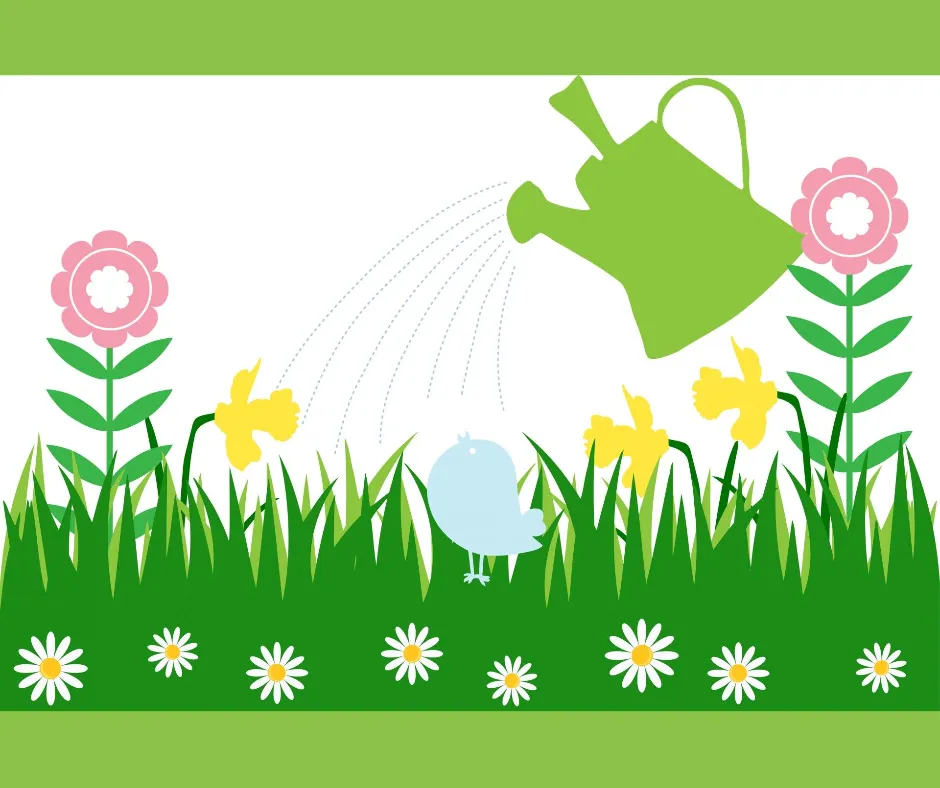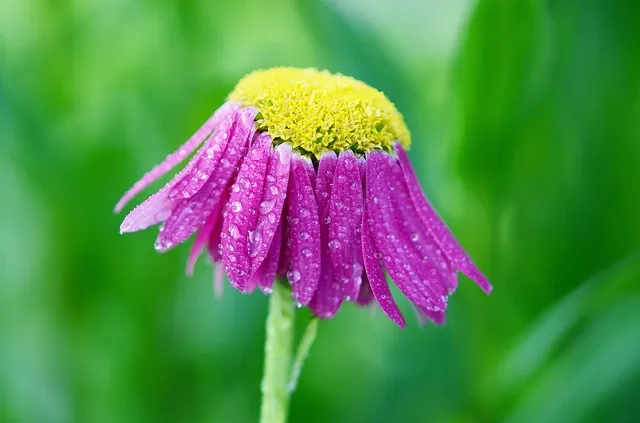Tech Driven Effective Landscape Irrigation
As a homeowner, maintaining a beautiful and healthy landscape is likely a top priority for you.
Utilization of Tech Driven Effective Landscape Irrigation can be a tremendous benefit.
However, achieving this goal can be challenging without the proper understanding of irrigation technology.
The advancements in irrigation technology have greatly improved the efficiency and effectiveness of landscape irrigation, making it easier to keep your plants and lawn healthy while conserving water.
In this article, you will gain a comprehensive understanding of the technology that drives effective landscape irrigation.
Whether you are a beginner or an experienced gardener, this article will provide you with valuable insights on the different types of irrigation methods, their benefits, and how to choose the right one for your specific landscape needs.
By the end of this article, you will have the knowledge and tools necessary to make informed decisions when it comes to irrigation technology, ultimately helping you achieve a thriving and visually appealing landscape.
So, let us dive into the world of irrigation technology and discover how it can transform your landscape maintenance routine.
Table of Contents Tech Driven Effective Landscape Irrigation
Discover the key components involved
To effectively implement landscape irrigation, it is crucial to understand the technology behind it.
By comprehending the key components involved, you can ensure the efficient and precise distribution of water to maintain healthy plants and conserve resources.
One essential component is the irrigation controller, which serves as the brain of the system, allowing you to schedule watering times and adjust settings.
Another vital element is the sprinkler heads, responsible for dispersing water evenly across the landscape.
By selecting the appropriate type and positioning them strategically, you can optimize water usage and prevent over or under-watering.
Additionally, the water source and supply lines play a crucial role in delivering water to the irrigation system.
Adequate water pressure and high-quality pipes are necessary for optimal performance.
Understanding how these components work together will enable you to design and operate an effective landscape irrigation system, promoting sustainability and ensuring the health and beauty of your outdoor space.
Explore the latest advancements available
As you delve deeper into understanding the technology that drives effective landscape irrigation, it is essential to explore the latest advancements available.
The field of landscape irrigation is constantly evolving, with innovative solutions emerging to enhance efficiency and sustainability.
One exciting advancement is the integration of smart irrigation systems.
These systems utilize sensors and weather data to monitor soil moisture levels, evapotranspiration rates, and rainfall.
By analyzing this information in real-time, smart irrigation systems can automatically adjust watering schedules and duration to optimize water usage and prevent wastage.
Additionally, the advent of cloud-based irrigation controllers allows for remote monitoring and control, providing convenience and flexibility for landscape maintenance professionals.
Furthermore, advancements in irrigation technology have led to the development of efficient sprinkler heads that minimize water loss due to evaporation and wind drift.
These advanced sprinkler heads offer precise and uniform water distribution, promoting healthy plant growth while conserving water resources.
By staying informed about the latest advancements in landscape irrigation technology, you can leverage these innovations to design and implement highly efficient and sustainable irrigation systems.
Understand how to optimize efficiency
To optimize efficiency in landscape irrigation, it is crucial to consider several key factors.
Firstly, evaluating the specific water needs of different plant species and grouping them accordingly can prevent over or under watering.
By understanding the water requirements of each plant, you can create tailored irrigation zones that deliver the right amount of water to each area.
Secondly, incorporating the use of soil moisture sensors can significantly improve efficiency.
These sensors measure the moisture content in the soil, allowing you to adjust irrigation schedules based on actual plant needs rather than relying on predetermined timers.
Thirdly, regular maintenance of irrigation systems is essential.
By conducting routine inspections, checking for leaks or clogged sprinkler heads, and ensuring proper system operation, you can minimize water wastage and maximize efficiency.
Lastly, implementing water-saving technologies such as drip irrigation or low-flow sprinklers can significantly reduce water usage without compromising plant health.
By implementing these strategies, you can optimize efficiency in landscape irrigation, conserving water resources and promoting sustainable practices.
Learn how to minimize resource waste
Understanding the technology that drives effective landscape irrigation also involves learning how to minimize resource waste.
As a responsible landscape irrigation professional, it is important to adopt practices that promote conservation and sustainability.
One effective way to minimize resource waste is by implementing smart irrigation systems.
These systems use advanced technologies like weather-based controllers and soil moisture sensors to optimize watering schedules based on real-time data.
By only irrigating when necessary and adjusting water distribution based on specific plant needs, you can significantly reduce water consumption and minimize waste.
Additionally, employing efficient irrigation techniques such as drip irrigation or low-flow sprinklers can further enhance water conservation efforts.
By adopting these practices and staying up to date with the latest advancements in irrigation technology, you can both enhance the effectiveness of landscape irrigation and contribute to a more sustainable future.
Implement technology for better results
To achieve better results in landscape irrigation, it is crucial to embrace the implementation of advanced technology.
Integrating technology into your irrigation practices can enhance efficiency, accuracy, and ultimately optimize the overall performance of your landscape irrigation system.
By utilizing automated irrigation controllers, you can precisely schedule irrigation cycles, ensuring that plants receive the right amount of water at the right time.
Additionally, implementing sensors that measure soil moisture levels and weather conditions allows for real-time data-driven irrigation decisions, eliminating guesswork and improving water management.
These technological advancements not only save water but also reduce operational costs and maintenance efforts.
By harnessing the power of technology in landscape irrigation, you can achieve better results, enhance sustainability, and contribute to the preservation of our precious water resources.
In conclusion, understanding the technology behind effective landscape irrigation is crucial for any professional in the industry.
By staying up-to-date on the latest advancements and utilizing tools such as smart controllers and soil moisture sensors, you can provide the best possible irrigation solutions for your clients.
Remember to always consider factors such as climate, soil type, and plant needs when designing an irrigation system.
With the right knowledge and technology, you can ensure efficient and sustainable irrigation practices for beautiful and healthy landscapes.
FAQ
What are the key technologies used in landscape irrigation systems today?
In landscape irrigation systems today, key technologies include smart controllers, weather sensors, and drip irrigation.
Smart controllers use data and algorithms to automatically adjust watering schedules based on weather conditions and plant needs.
Weather sensors monitor temperature, humidity, and rainfall to ensure precise irrigation.
Drip irrigation, which delivers water directly to the roots, reduces water waste and promotes efficient watering.
These technologies allow for more precise control, conserve water, and promote healthier landscapes.
So, when it comes to landscape irrigation systems, you can count on smart controllers, weather sensors, and drip irrigation to keep your plants thriving while minimizing water consumption.
How does weather-based irrigation technology work and how does it contribute to water conservation?
Weather-based irrigation technology works by using sensors and data to determine the specific water needs of plants based on the current weather conditions.
This technology then adjusts the irrigation schedule accordingly, allowing for more precise and efficient watering.
By only providing water when it is necessary, water-based irrigation technology helps to conserve water by reducing unnecessary irrigation.
Additionally, this technology can also factor in other variables such as soil moisture levels, plant types, and evapotranspiration rates, further optimizing water usage.
Overall, weather-based irrigation technology helps to minimize water waste and promote sustainable water management practices.
Can you explain the concept of smart irrigation controllers and how they optimize water usage?
Smart irrigation controllers are devices that use advanced technology to optimize water usage in your irrigation system.
By using sensors, weather data, and historical watering patterns, these controllers can determine the most efficient watering schedule for your plants.
They adjust watering times and durations based on factors like soil moisture levels, rainfall, and evaporation rates.
This ensures that your plants receive the right amount of water at the right time, reducing water waste and promoting healthier growth.
With a smart irrigation controller, you can save water, lower your water bills, and contribute to environmental conservation.
What are some innovative technologies being developed to improve the efficiency of landscape irrigation?
You might be interested in learning about some of the innovative technologies that are being developed to enhance the efficiency of landscape irrigation.
One such technology is smart irrigation systems, which use sensors to detect soil moisture levels and weather conditions, allowing for precise and optimized water usage.
Another technology is drip irrigation, which delivers water directly to the plant’s roots, reducing water loss through evaporation.
Additionally, there are remote-controlled irrigation systems that can be managed through mobile apps, enabling you to monitor and adjust watering schedules from anywhere.
These technologies aim to conserve water and improve the overall efficiency of landscape irrigation.
How does the integration of sensors and remote monitoring systems enhance the effectiveness of landscape irrigation?
By integrating sensors and remote monitoring systems into your landscape irrigation system, you can enhance its effectiveness.
You are able to accurately measure soil moisture levels, weather conditions, and plant water requirements in real-time.
This information allows you to make informed decisions about when and how much water to apply, ensuring optimal irrigation efficiency.
Additionally, remote monitoring systems enable you to control and adjust irrigation settings remotely, saving you time and effort.
With this integration, you have the power to customize irrigation schedules and respond quickly to changing conditions, ultimately improving the health and sustainability of your landscape.







